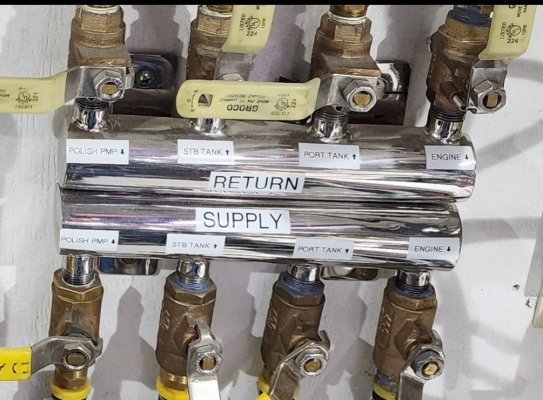Tollylover
Member
- Joined
- Mar 2, 2023
- Messages
- 7
- Vessel Name
- KNOT FLYIN
- Vessel Make
- Tollycraft 44 CMY 1988
Hi everybody,
I will be starting the gas to diesel repower of my '88 44cmy in December. Part of the job is to get new aluminum tanks built. Has anyone heard of plumbing the tanks to a single point refueling system to eliminate the need to reposition at the fuel dock or drag the hose a long way to reach the other filler neck. The yard is talking of a 2" balance tube, I'm not crazy about a 2" line coming out of the bottom of both tanks and crossing the entire beam of the engine room, too much chance of leaks, murphy's law being what it is. I'm thinking transfer pump. any ideas?
I will be starting the gas to diesel repower of my '88 44cmy in December. Part of the job is to get new aluminum tanks built. Has anyone heard of plumbing the tanks to a single point refueling system to eliminate the need to reposition at the fuel dock or drag the hose a long way to reach the other filler neck. The yard is talking of a 2" balance tube, I'm not crazy about a 2" line coming out of the bottom of both tanks and crossing the entire beam of the engine room, too much chance of leaks, murphy's law being what it is. I'm thinking transfer pump. any ideas?

